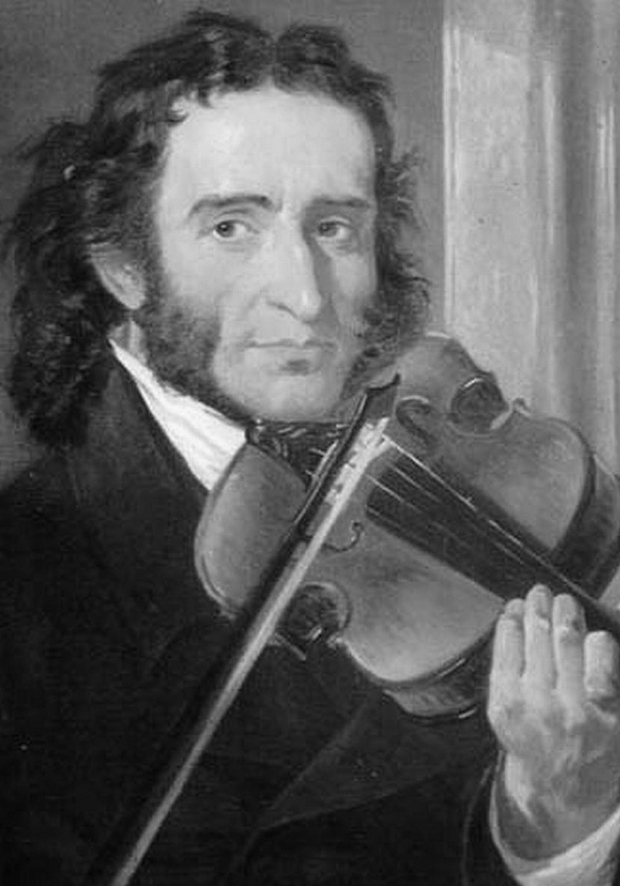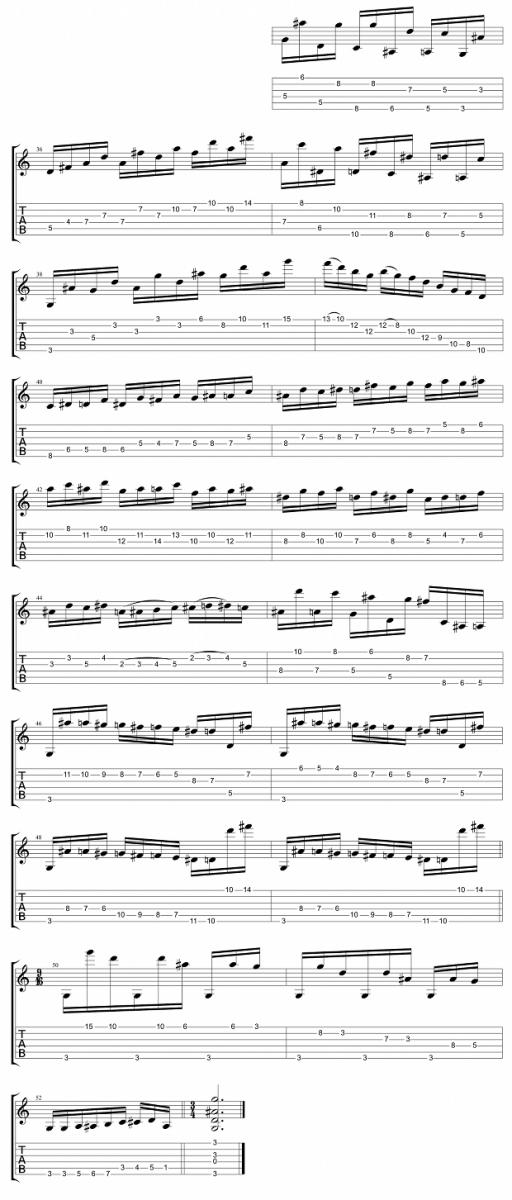Bent Out of Shape: Learning Paganini's 16th Caprice in G Minor, Part 3

In this third and final installment (Check out parts 1 and 2 below the photo of Niccolo Paganini to the left), we will finish learning Paganini's 16th Caprice in G minor.
Note that just memorizing this piece is a challenge in itself. After doing so, you can finally begin to build speed. You can accomplish this by playing the entire piece or break it into smaller sections and work them up to speed individually. I prefer to play the whole thing, start to finish, and increase the tempo gradually.
My max tempo is around 120 bpm, and I can comfortably perform the piece without mistakes at 100 bpm. This can be heard in the Soundcloud stream below.
Part 3 three starts at Bar 35, or 1:18 on the audio reference (See below). This final part contains themes we have seen before in the previous two parts. The first section starts with wide intervals played with string skipping, followed by a D major arpeggio ascending sequence (bar 36). This is then mirrored with a similar pattern played with a G minor arpeggio (bar 38).
At bar 40, there are some relatively easy linear sequences with smaller intervals. If you have a good alternate-picking technique, this shouldn't be too challenging. Toward the end (bars 46 to 49), there is a repetitive chromatic sequence repeated over different octaves, which isn't too difficult, except at the beginning of each bar; returning to the G on the low E string will require some practice.
For me, the most challenging part of the piece is at the very end, at bar 50. This is a G minor arpeggio played with a pedal tone root note on the low E string. The problem is the extreme distances you have to jump between. As you descend the arpeggio, you have to return to the root, which will take a lot of practice and precision. Although I can just about play this at 120 bpm, I believe it's physically impossible to play at the piece's actual tempo of 165 bpm.
There are a few alternatives I can suggest. You could play the root note an octave higher on the open G string, which would make this sequence much more manageable. Alternatively, you could tap this section with your picking hand tapping the root note on the low E string and hammering with your fretting hand to play the arpeggio sequence. You should experiment to see which works for you.

Will Wallner is a guitarist from England who now lives in Los Angeles. He recently signed a solo deal with Polish record label Metal Mind Productions for the release of his debut album, which features influential musicians from hard rock and heavy metal. He also is the lead guitarist for White Wizzard (Earache Records) and toured Japan, the US and Canada in 2012. Follow Will on Facebook and Twitter.
Get The Pick Newsletter
All the latest guitar news, interviews, lessons, reviews, deals and more, direct to your inbox!
“There are so many sounds to be discovered when you get away from using a pick”: Jared James Nichols shows you how to add “snap, crackle and pop” to your playing with banjo rolls and string snaps
Don't let chord inversions bamboozle you. It's simply the case of shuffling the notes around







![Joe Bonamassa [left] wears a deep blue suit and polka-dotted shirt and plays his green refin Strat; the late Irish blues legend Rory Gallagher [right] screams and inflicts some punishment on his heavily worn number one Stratocaster.](https://cdn.mos.cms.futurecdn.net/cw28h7UBcTVfTLs7p7eiLe.jpg)


